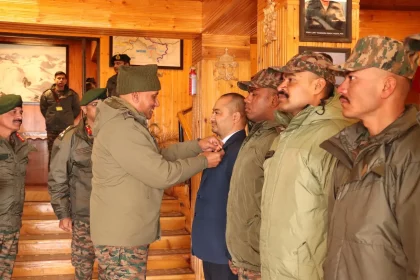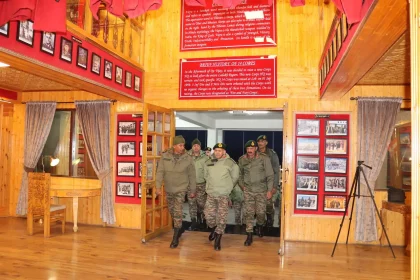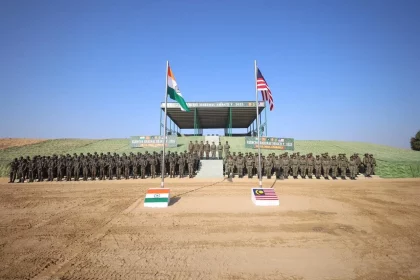Lt Gen Pratik Sharma Visits Fire and Fury Corps, Reviews Key Infrastructure Initiatives in Ladakh
Army Commander Reviews Ladakh Infrastructure, Lauds Civil–Military Synergy.
General Upendra Dwivedi Reviews Security Preparedness During Visit to Fire and Fury Corps
COAS Reviews Security and Operational Readiness in Ladakh.
Indian Naval Academy Set to Host 14th Edition of Admiral’s Cup 2025
Global Naval Sailing Championship to Witness Participation from 35 Countries at INA Ezhimala.
IAF’s 18 Squadron ‘Flying Bullets’ Celebrates Diamond Jubilee at AFS Naliya
Celebrating 60 Years of Valour, Heritage and Aatmanirbhar Bharat’s Frontline Air Warriors.
71 Cadets Graduate from IMA’s Army Cadet College Wing in Dehradun
71 ACC cadets receive JNU degrees, top performers honoured; Kargil Company wins Commandant’s Banner at IMA Dehradun ceremony.
India, Malaysia Begin Joint Military Exercise Harimau Shakti 2025 in Rajasthan
Indian DOGRA Regiment and Malaysian 25th Battalion Train Together for Enhanced Counter-Terror Operations in Rajasthan.






